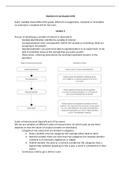Summary
Statistics and methodology summary
- Course
- Institution
Elaborate summary of statistics and methodology given course given in pre-master data science & society. The summary includes explanation about the materials of the course as well as explanation about how to do the discussed calculations and models in R.
[Show more]



